Saudi Arabia, a land steeped in rich history, cultural heritage, and stunning landscapes, has opened its doors to international tourism in recent years. The Kingdom, known for its significant role in the Islamic world, is now showcasing its treasures to the global traveler, revealing a vast array of attractions from bustling cities to serene deserts, ancient archaeological sites, and modern marvels.
This article will take you through the top places to visit in Saudi Arabia, offering insights into each destination’s history, culture, and significance. Along the way, we’ll dive into the facts and statistics that demonstrate just how much this country has to offer.
1. Riyadh – The Capital City
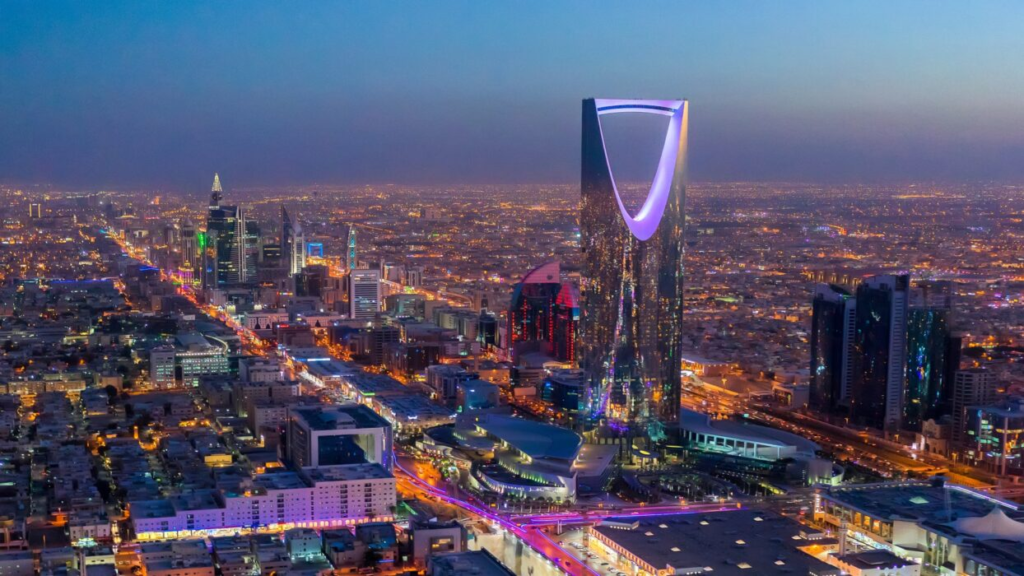
Riyadh, the capital of Saudi Arabia, is a city where modernity meets tradition. It is not only the political and administrative center of the Kingdom but also one of the fastest-growing cities in the world, with a population of over 7.6 million people. This vibrant city offers an intriguing mix of history, culture, and modern attractions, making it a must-visit destination.
- Kingdom Centre Tower: One of the most recognizable landmarks in Riyadh is the Kingdom Centre Tower. Standing at 302 meters, this skyscraper offers a breathtaking view of the city from its Sky Bridge. The Kingdom Centre Tower also houses luxury shopping malls, hotels, and restaurants, making it a hub of activity for both tourists and locals.
- Al Masmak Fortress: A symbol of Saudi Arabia’s unification, Al Masmak Fortress is a historical landmark that played a key role in the country’s modern history. This mud-brick fort was the site where King Abdulaziz recaptured Riyadh in 1902, marking the beginning of the unification of Saudi Arabia. Today, it serves as a museum showcasing artifacts and exhibits related to the country’s history.
- The National Museum: Located within the King Abdulaziz Historical Centre, the National Museum of Saudi Arabia offers visitors a deep dive into the Kingdom’s history, from prehistoric times to the modern era. With over 3,700 artifacts, interactive displays, and models, it provides a comprehensive understanding of the cultural and historical development of the region.
According to the Saudi General Authority for Statistics, Riyadh’s tourism sector has experienced rapid growth, with millions of visitors coming to the city annually, particularly for business, religious pilgrimages, and cultural tourism.
Keep reading: Things to Avoid While Traveling for the First Time
2. Jeddah – The Gateway to Mecca
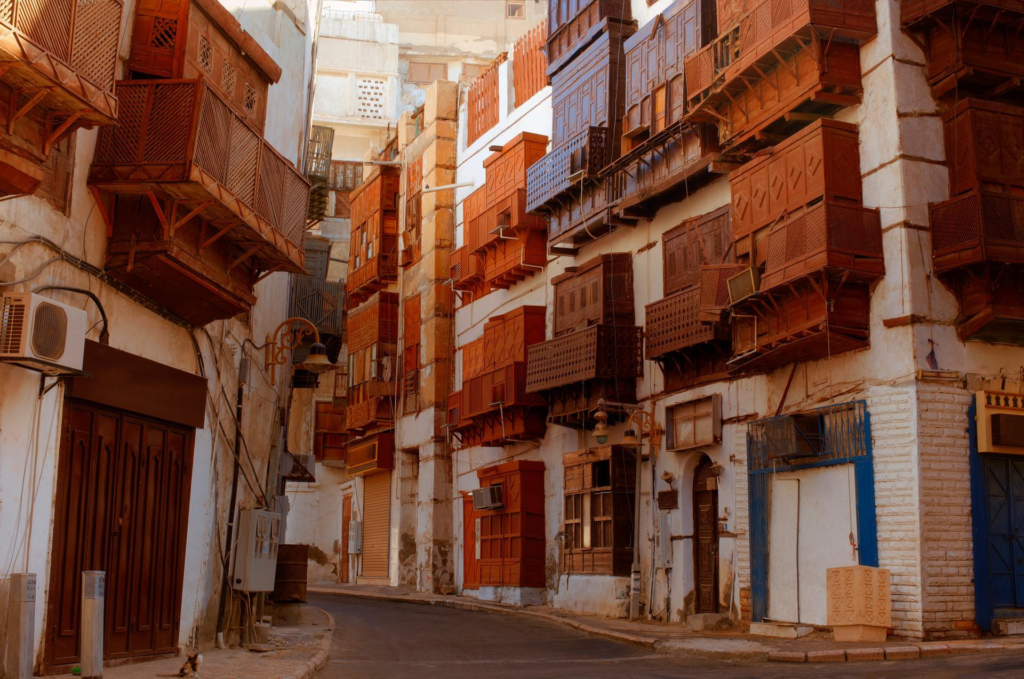
Jeddah, located on the coast of the Red Sea, is Saudi Arabia’s second-largest city and its commercial capital. It is also known as the “Gateway to Mecca” because it is the main entry point for millions of pilgrims heading to the holy cities of Mecca and Medina for Hajj and Umrah. Jeddah is famous for its stunning waterfront, historical districts, and modern urban developments.
- Jeddah Corniche: Stretching along the coast of the Red Sea, the Jeddah Corniche is a beautiful promenade that offers stunning views of the sea, public sculptures, recreational parks, and the famous King Fahd Fountain, which is the tallest in the world, reaching a height of 312 meters. The Corniche is a popular spot for families, joggers, and tourists alike.
- Al-Balad (Historic Jeddah): Al-Balad, the old town of Jeddah, is a UNESCO World Heritage Site that dates back to the 7th century. Walking through its narrow streets, visitors can explore traditional houses made from coral and limestone, such as the famous Naseef House. The souks (markets) in Al-Balad offer a range of traditional goods, spices, and crafts, providing a glimpse into Jeddah’s rich trading history.
- Floating Mosque: Also known as the Al Rahma Mosque, this striking mosque appears to float on the waters of the Red Sea at high tide. Its serene and peaceful setting makes it one of the most photographed landmarks in Jeddah, and it’s a popular spot for both tourists and worshippers.
In 2019, Jeddah received over 5 million visitors, and its significance as a tourism hub is only expected to grow as the Saudi Vision 2030 initiative aims to transform the city into a global destination for culture and leisure.
3. Mecca and Medina – The Holiest Cities in Islam
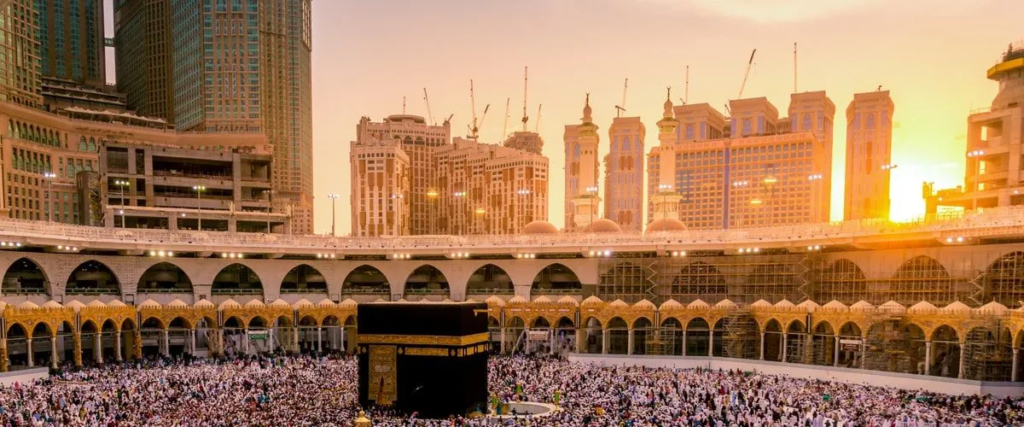
No visit to Saudi Arabia is complete without acknowledging Mecca and Medina, the two holiest cities in Islam. These cities are the spiritual heart of the Muslim world and are visited by millions of Muslims annually during Hajj and Umrah.
- Mecca: Mecca is home to the Masjid al-Haram, the largest mosque in the world, which houses the Kaaba, the most sacred site in Islam. Every year, over 2 million Muslims undertake the pilgrimage of Hajj to Mecca, fulfilling one of the Five Pillars of Islam. Non-Muslims are not permitted to enter Mecca, but for Muslims, it is the ultimate destination for spiritual reflection and prayer.
- Medina: Medina is the second holiest city in Islam and is home to the Prophet’s Mosque, where the Prophet Muhammad is buried. Medina is a peaceful and serene city that offers a deep spiritual experience for Muslims who visit to pray and reflect.
In 2019, nearly 10 million pilgrims visited Saudi Arabia for Hajj and Umrah, a testament to the enduring significance of these cities in the Islamic faith.
4. Al Ula – A Hidden Gem in the Desert
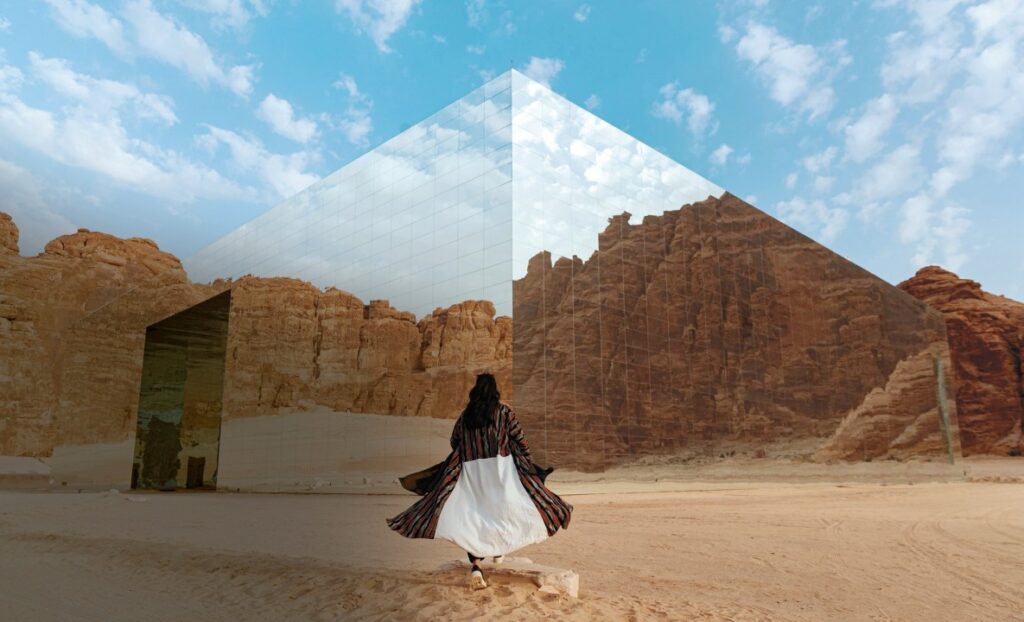
Al Ula, located in northwestern Saudi Arabia, is one of the country’s most stunning and mysterious destinations. Known for its breathtaking landscapes, ancient rock formations, and archaeological treasures, Al Ula is quickly gaining recognition as a must-visit destination.
- Hegra (Madain Saleh): Hegra, a UNESCO World Heritage Site, is often referred to as the “Petra of Saudi Arabia.” It was once the second-largest city of the Nabataean Kingdom after Petra in Jordan. Hegra is home to over 100 well-preserved tombs carved into sandstone cliffs, showcasing the impressive architectural skills of the Nabataeans. Exploring Hegra’s vast archaeological site offers a glimpse into a lost civilization that thrived over 2,000 years ago.
- Elephant Rock: One of the most iconic natural landmarks in Al Ula is Elephant Rock, a massive sandstone formation that resembles an elephant with its trunk extended to the ground. This unique geological wonder is a popular spot for photography and offers stunning views, especially during sunset.
- Al Ula Old Town: Al Ula’s Old Town is a historical village that has been partially restored, giving visitors a chance to walk through its narrow alleyways and explore ancient mud-brick houses. The town served as a stop along the Incense Route, an ancient trade route that connected Arabia with the Mediterranean.
In recent years, Al Ula has been the focus of significant tourism development efforts, including the annual Winter at Tantora Festival, which showcases local culture, music, and art. In 2020, the Royal Commission for Al Ula announced plans to attract over 2 million visitors annually by 2035, making it one of the most important tourist destinations in the country.
5. The Empty Quarter (Rub’ al Khali)

The Empty Quarter, or Rub’ al Khali, is the largest continuous sand desert in the world, covering much of southern Saudi Arabia. It is a vast, desolate landscape that has captivated explorers, adventurers, and writers for centuries. The desert’s sheer size and untouched beauty make it a destination for those seeking an escape from the modern world.
- Desert Adventures: For thrill-seekers, the Empty Quarter offers a range of adventure activities, including dune bashing, sandboarding, and camel trekking. The desert’s massive sand dunes, some of which reach heights of over 250 meters, provide a challenging yet exhilarating experience for visitors.
- The Lost City of Ubar: Often referred to as the “Atlantis of the Sands,” the lost city of Ubar is believed to be buried somewhere beneath the sands of the Empty Quarter. Although its exact location remains a mystery, the legend of Ubar has intrigued archaeologists and explorers for decades. Visitors to the Empty Quarter can explore ancient ruins and oases that offer a glimpse into the desert’s storied past.
The Rub’ al Khali remains one of the most remote and untouched places on Earth, making it a unique destination for those looking to experience the raw beauty of the desert.
6. Abha – The Green Jewel of Saudi Arabia

Located in the Asir Mountains in the southwestern part of the country, Abha is a city known for its cool climate, lush landscapes, and vibrant cultural scene. Often referred to as the “Green Jewel” of Saudi Arabia, Abha offers a stark contrast to the country’s desert landscapes.
- Asir National Park: Asir National Park is one of the most beautiful natural areas in Saudi Arabia, with rugged mountains, lush forests, and scenic valleys. The park is home to a variety of wildlife, including baboons, eagles, and gazelles, making it a popular destination for nature lovers and hikers.
- Jabal Sawda: Jabal Sawda, located near Abha, is the highest peak in Saudi Arabia, standing at an elevation of 3,015 meters. The mountain offers stunning views of the surrounding landscape, and its cool climate makes it a perfect escape from the heat of the lowlands.
- Abha Palace: Abha Palace is a historical site that offers insight into the region’s rich cultural heritage. Visitors can explore traditional Asiri architecture
, colorful murals, and learn about the customs and traditions of the local people.
Abha’s unique climate and natural beauty make it a popular destination for both domestic and international tourists, particularly during the summer months when temperatures are cooler.
7. Taif – The City of Roses

Taif, located in the mountains of the Makkah Province, is a city known for its pleasant climate, beautiful gardens, and rose production. The city’s cool temperatures and scenic beauty make it a popular summer retreat for Saudis and tourists alike.
- Al Shafa and Al Hada: These mountainous areas surrounding Taif offer breathtaking views, cool temperatures, and opportunities for outdoor activities like hiking and picnicking. The cable car ride from Al Hada provides stunning panoramic views of the mountains and valleys below.
- Rose Gardens: Taif is famous for its rose gardens, which bloom in the spring and produce some of the finest rosewater in the world. Visitors can tour the rose farms and witness the traditional process of extracting rose oil, which is used in perfumes and cosmetics.
- Shubra Palace: Shubra Palace is one of the most important historical landmarks in Taif. Built in the early 20th century, the palace is a beautiful example of Islamic and Roman architecture. It now serves as a museum showcasing the history and culture of the region.
Every year, Taif hosts the Rose Festival, which celebrates the city’s rose production and attracts thousands of visitors. In 2019, the city welcomed over 3 million tourists, highlighting its growing importance as a travel destination in Saudi Arabia.
8. Dammam and the Eastern Province
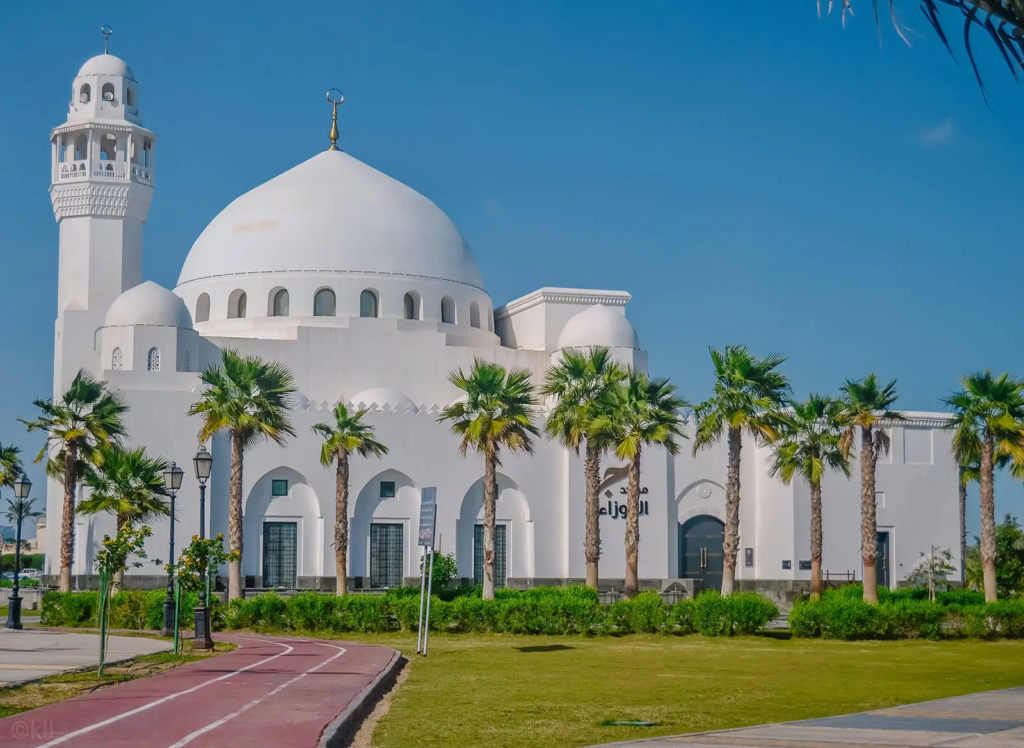
Dammam, the capital of the Eastern Province, is one of Saudi Arabia’s major economic hubs and a gateway to the Arabian Gulf. The city and the surrounding region offer a mix of modern attractions, cultural experiences, and natural beauty.
- Half Moon Bay: Half Moon Bay is a popular beach destination located just outside of Dammam. The calm waters of the bay make it ideal for swimming, water sports, and family picnics. The area also offers a range of resorts and hotels, making it a perfect spot for a beach getaway.
- King Fahd Park: King Fahd Park is one of the largest parks in Saudi Arabia, covering an area of over 100 hectares. The park features beautiful gardens, walking paths, playgrounds, and an amusement park, making it a great destination for families.
- Heritage Village: Located in nearby Al Khobar, Heritage Village is a cultural attraction that showcases the history and traditions of the Eastern Province. Visitors can explore traditional homes, watch craftsmen at work, and enjoy local cuisine in a traditional setting.
Dammam’s strategic location along the Arabian Gulf has made it a key destination for both business and leisure travelers, with over 4 million visitors in 2019.
9. Yanbu – A Coastal Paradise
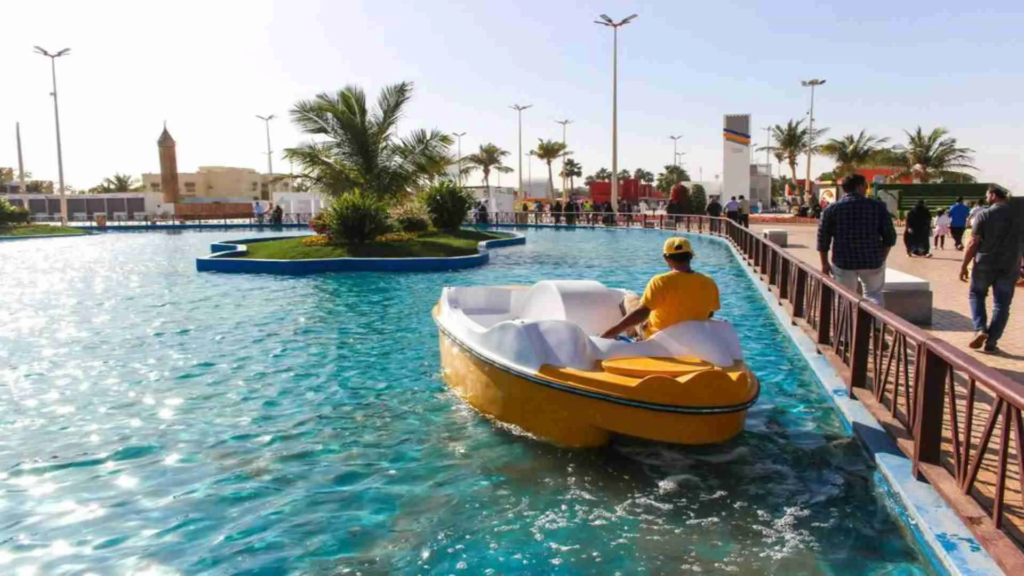
Yanbu, located on the western coast of Saudi Arabia along the Red Sea, is a city known for its beautiful beaches, crystal-clear waters, and thriving marine life. It is a popular destination for water sports enthusiasts and those looking to relax by the sea.
- Yanbu Al-Bahr: The coastal area of Yanbu Al-Bahr is known for its pristine beaches and crystal-clear waters, making it an ideal destination for swimming, snorkeling, and diving. The coral reefs along the coast are home to a diverse array of marine life, making it a popular spot for underwater exploration.
- Yanbu Historical Area: The historical area of Yanbu offers a glimpse into the city’s past as an important trading port. Visitors can explore traditional buildings, markets, and the house where British officer T.E. Lawrence (Lawrence of Arabia) once lived.
Yanbu is often referred to as the “Pearl of the Red Sea,” and its popularity as a tourist destination is growing, particularly for those interested in marine activities and coastal relaxation.
A New Era of Tourism in Saudi Arabia
Saudi Arabia is undergoing a tourism transformation as part of its Vision 2030 initiative, which aims to diversify the country’s economy and showcase its rich cultural heritage and natural beauty to the world. From the bustling cities of Riyadh and Jeddah to the ancient ruins of Al Ula and the serene beaches of Yanbu, the Kingdom offers a wide range of experiences for travelers of all kinds.
The government has made significant investments in infrastructure, tourism development, and cultural preservation, making it easier than ever for international visitors to explore the many wonders of Saudi Arabia. Whether you’re drawn to the history and spirituality of Mecca and Medina, the natural beauty of the Empty Quarter, or the modern attractions of Riyadh and Jeddah, Saudi Arabia offers a unique and unforgettable experience for every traveler.
As Saudi Arabia continues to open up to global tourism, it is poised to become one of the world’s top travel destinations, offering a perfect blend of history, culture, adventure, and luxury.
Read also: Is it Safe to Visit Saudi Arabia?, Full Guide for Tourists










